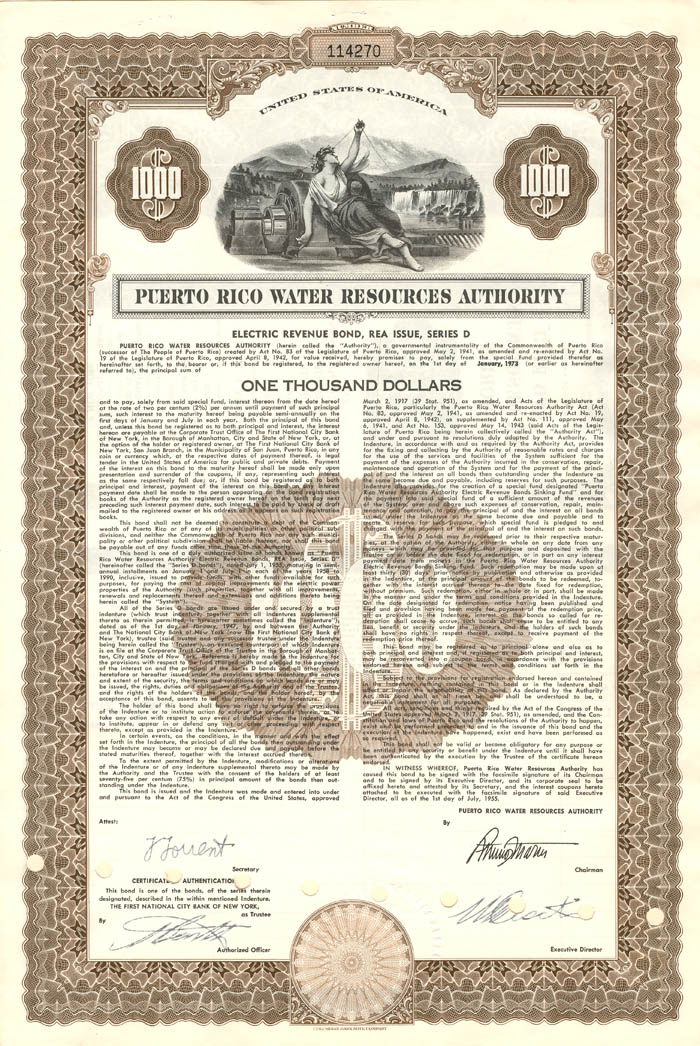Puerto Rico Water Resources Authority - 1955 dated $1,000 Puerto Rican Bond
Inv# FB6179A Bond
$1,000 2% Bond printed by Columbian Bank Note Company. The Puerto Rico Electric Power Authority (PREPA; Spanish: AEE) is a government-owned electric utility responsible for the generation, distribution, and transmission of electricity throughout the Commonwealth of Puerto Rico. Until January 22, 2018, PREPA held a monopoly on these services, being the sole entity permitted to operate in this sector. On that date, former Governor Ricardo Rossello declared plans for the privatization of the company, indicating that all of its assets would be sold.
A bond is a document of title for a loan. Bonds are issued, not only by businesses, but also by national, state or city governments, or other public bodies, or sometimes by individuals. Bonds are a loan to the company or other body. They are normally repayable within a stated period of time. Bonds earn interest at a fixed rate, which must usually be paid by the undertaking regardless of its financial results. A bondholder is a creditor of the undertaking.










Ebay ID: labarre_galleries